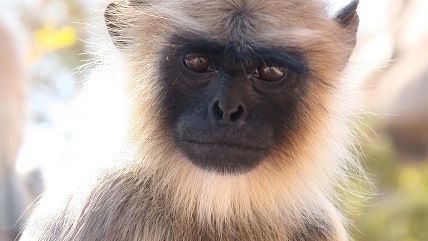How Human Are Monkeys?
Sunday night's National Geographic documentary shows warfare, lying.


Whatever else you may take away from this episode of Destination Wild, the phrase "more fun than a barrel of monkeys" will be officially dead to you. Turns out they get high blood pressure and ulcers. They nag each other about child care. They go to war and have high murder rates. They've even developed grammar, which strongly implies the existence of petty monkey pedants and even monkey editors. In short, the capacity of monkeys for self-inflicted misery is nearly equal to our own, give or take Taylor Swift.
Indeed, this is the whole point of Clever Monkeys. Monkeys and humans share as much as 93 percent of their DNA. "We've always known there was part of them in us, and part of us in them," says narrator David Attenborough, a veteran nature documentarian. "What makes us human may not be uniquely human after all."
Thus Clever Monkeys is a sort of family snapshot album. The show continent-hops from Asia to Africa to South and Central America looking for monkeys engaging in human behaviors that range from amusing to depressing and never comes up empty. There are scenes of monkeys affectionately petting dogs, playing chicken with trains, and smashing mirrors in a rage at their reflections. (Monkey bad-hair days are not to be taken lightly.)
Monkeys in urban areas, much like their human counterparts, often go gangsta, tormenting street vendors and looting unattended homes. There's even a clip of some Indian macaques going totally bonkers after breaking into a large barrel of white powder. It's hard to believe it was cocaine, unless the average Indian village has a much higher per-capita GDP than we've been led to believe, but the idea of monkey narco-traffickers is not entirely far-fetched. In another scene, monkeys who discover a copse of plants with antibiotic properties roll around lasciviously, rubbing the leaves on one another.
Some monkey species intermarry, sort of; pygmy marmosets and tamarins share child-care duties, with the females sticking out their tongues when they want to the males to take over while they head out for ladies' night. (I'd guess they avoid clubs with a heavy clientele of howler monkeys, for whom sticking out the tongue is a mating call.)
More commonly, though, monkey species war on one another, and this is where all the cuteness abruptly drains from Clever Monkeys. Monkeys may not have been clever–or stupid–enough to invent napalm or cruise missiles, but their screams of pain and terror as they sink fangs into one another are as blood-curdling as anything you'll see on the evening news from Syria or Iraq. The aftermath of their combat is also hauntingly human, as they comfort and soothe the wounded, and tenderly groom the dead one last time.
Some of the behavior in Clever Monkeys may be instinctual, but some is clearly learned. Africa's Diana monkeys not only decode the danger calls of neighboring species (they have different sounds for different threats like leopards or snakes) but use grammar, changing the order of sounds to alter a message.
Clever Monkeys' film crews even came across a Costa Rican species in which some brigands cry wolf–well, snake–to drive their companions into the trees, then loot their stuff. "Lying," observes Attenborough, "may be as old as language itself." This a good place to note that Clever Monkeys, engrossing as it may be, isn't actually a new production, as the Nat Geo Wild network pitches it, but a retitled 2008 episode of the BBC series Natural World. Doubtless the network's publicity department was led astray by those mendacious monkeys.
Destination Wild: Clever Monkeys. Nat Geo Wild. Sunday, July 26, 9 p.m. EDT.


Show Comments (31)